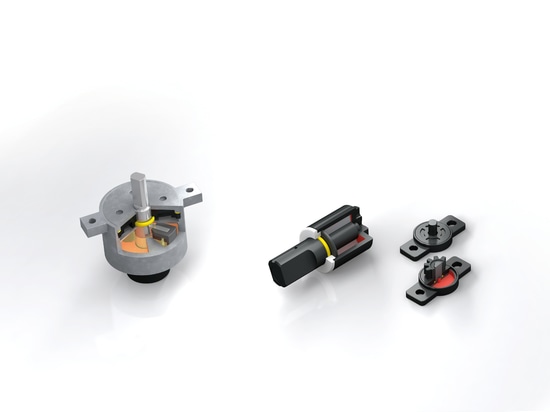
#Industry News
Stabilizing the hands of Parkinson’s patients: A collaborative journey between STIL and ACE
Medical Technology and Fine Machine Elements
Worldwide, over 30 million people suffer from involuntary shakes in the arms as the result of Parkinson’s disease or essential tremor. Providing relief for these people is the mission of STIL. This innovative Dutch start-up teamed up with ACE Stoßdämpfer GmbH from Germany for the development of their specialized anti-tremor orthosis.
Tremor is defined as a rhythmic, involuntary oscillatory movement of a body part. Although everybody has tremors from time to time, for instance when nervous, this small degree of tremor is not enough to affect daily activities. Other pathologies, however, lead to disabling tremor. Essential tremor is the most common neurological movement disorder, affecting over 5.8% of the population over 65 years old. It is estimated that over 10 million people worldwide have Parkinson’s disease. Both disorders can lead to having severe difficulties in performing activities of daily living (ADL), such as eating and drinking.
Although tremors can sometimes be managed through pharmacotherapy or surgery, these treatments present drawbacks. Drugs have limited tremor reduction and have effect for half of the tremor population. Surgery can be a hazardous procedure for patients and efficacy of such treatment is likely to decrease over years. In this context, treatments that manage tremors by modifying limb biomechanics could provide a meaningful alternative solution. This is exactly the approach that STIL is pursuing with their medical device that stabilizes tremors.
A flash of inspiration
IJsbrand de Lange, CEO and founder of STIL, first came up with the idea for a biomechanical device in 2014, when he saw a promotional video by the Michael J. Fox Foundation about people with Parkinson’s disease. He recounts: "These tremors are involuntary shakes in the arm that arise when the muscles are repeatedly contracted and released. Though tremors are the symptom of a neurological disorder, the shaking hand is basically a ‘mechanical defect’. As a Bachelor of Mechanical Engineering, I looked at the problem through a mechanical lens. If a machine vibrates involuntarily, you can apply active or passive damping techniques, and the problem is solved. Why wouldn’t this work with a person? The idea stayed in my mind and while I was in Germany doing an internship at Festo’s Bionic Learning Network. I had a flash of inspiration that I wanted to work on for my graduation project.” For this Master’s thesis at the Delft University of Technology, he built a proof-of-principle experimental device that could replicate and suppress tremors. Though still in its infancy, this device proved that mechanical loading could be effectively used to suppress tremors.
First awards and subsidies, and then a dead end
This was the foundation from which STIL was established in 2017. After years of research and development, in collaboration with patients and doctors, the team developed a wearable device that suppresses tremors: the STIL orthosis. This medical device redirects biomechanical forces from the hand to the upper arm, using a kinematic structure with several artificial joints. First of all, this patented design still allows full range of motion in the arm. Added to that, each of these joints are integrated with specialized dampers, that resist the high-frequency oscillatory movement of tremor, but allow intentional movement. That is what makes the STIL orthosis unique in the world, allowing tremor patients to independently eat and drink again.
STIL soon found partners such as EIT Health, Rabobank, Reiner de Graaf Hospital and even the Dutch Brain Foundation to support the start-up. On the engineering side, several generations of the anti-tremor orthoses were developed that attracted publicity, winning several awards and collaborations on international level, such as an Eurostars project together with Fraunhofer IBMT. At the same time, behind the scenes, IJsbrand de Lange, Nicola Pambakian, the Chief Technology Officer of STIL, and their team were continuously improving the construction of their invention, developing their own components, partly with the help of CAD and 3D-printers, partly by sourcing available standard machine elements. The latter was the case when identifying the right item that needed to be integrated into the orthosis to help with the damping and controlling of hand and wrist motions.
Initially, STIL tried using off-the-shelf rotary dampers, but quickly noticed these components were not suited for their use case. Once Nicola Pambakian and the engineering team needed support for a customized damping solution, they hit a dead end. Looking for damper manufacturers online was the easy part. Finding a supplying partner who is willing to go the extra mile together with STIL is a different, ongoing story.







